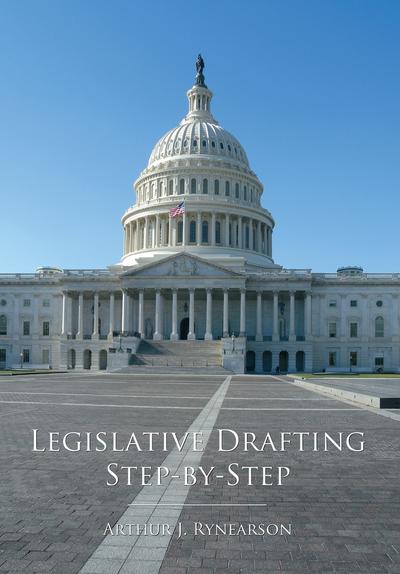Legislative Drafting Step-by-Step
2013
Tags: Lawyering Skills; Legal Writing; Legislation; and Statutory Interpretation
258 pp $50.00
ISBN 978-1-61163-380-1
eISBN 978-1-5310-0674-7
Legislative Drafting Step-by-Step is a practical, step-by-step guide to drafting legislation. This "how to" book untangles the web of confusion and technical detail that surrounds legislative drafting and presents drafting in an easy-to-understand way. In so doing, legislative drafting is shown to be a fun, intellectually engaging endeavor and not an intimidating prospect to be dreaded. In short, this concise, user-friendly guide seeks to de-mystify legislative drafting.
Legislative Drafting Step-by-Step includes the following:
• A five-step framework for analysis to guide the drafter in converting any legislative proposal into an actual bill, resolution, or amendment.
• Easy-to-learn rules to carry out each step of drafting.
• More than 150 examples of draft legislative language.
• 19 charts and tables illustrating the text.
• 9 drafting exercises, together with the answers, to test drafting skills.
• A description of the United States legislative process, as viewed by a legislative drafter.
• 16 House and Senate bill, resolution, and amendment forms.
Legislative Drafting Step-by-Step is designed to assist legislators, their staffs, and all who read or write legislation to better understand the basics of legislative drafting and the important role that well written legislation plays in promoting the rule of law. To this end, this guide may be used either as an essential reference tool for any office drafting legislation or as an introduction to legislative drafting for anyone seeking to learn the craft.
Legislative Drafting Step-by-Step is copublished by the International Law Institute.
Editorial Reviews
The people who are best at doing things are not always equally adept at explaining what they do and how they do it. That is why I am so pleased that we have Arthur Rynearson's Legislative Drafting Step-by-Step to explain, carefully and lucidly, how bills and other legislative documents are drafted for consideration by Congress in Washington.
This book should be required reading for every Representative and Senator, every congressional staffer involved in the legislative process, every lobbyist, and every lawyer and law student who is interested in public policy and how it is made. …[A] careful reader will come to appreciate Mr. Rynearson's enthusiasm for and pride in his chosen profession. …What they also will come to appreciate is that there are so many serious and dedicated people like Mr. Rynearson who devote their professional lives to enabling our government to do what we want it to do."
—
Mr. Rynearson has produced a guide for the legislative drafter that is both concise and complete. It is very well organized and presents a very complicated subject as clearly and directly as possible.Throughout the book, Mr. Rynearson has included drafting problems that are perfectly conceived to test the reader's understanding of each of the teaching points presented. And he very thoughtfully provides answers for the exercises at the end of the book.
The book concludes with a series of appendices that should be very helpful to the aspiring drafter. All-in-all, Legislative Drafting Step-by-Step is a highly readable and useful introduction to the art of legislative drafting, but it would also serve well as an excellent refresher course for the experienced drafter."
—
Arthur Rynearson's quarter century career as legislative draftsman, ultimately as Deputy Legislative Counsel of the United States Senate, enables him to draw on the experience of drafting literally thousands of legislative instruments for the US Senate. [...] There is a very detailed table of contents, a useful index and more than 50 pages of exercises (and answers!).
To conclude: it has been an almost unadulterated pleasure to read this book. I heartily recommend it."
—


